
We break down the cost to remove bamboo, which is slightly higher than other forms of tree removal. It's a difficult DIY task because of bamboo's hardy underground roots.
Yep, an old ladder can work beautifully


How does your garden grow? If you don’t have a trellis, the answer may be “chaotically.” Not all plants need a trellis—a structure that plants can attach to as they grow upward—but certain flowers and vegetables grow best vertically. So we created this guide to trellis ideas to help you find a structure that not only fits your garden’s purpose but also its aesthetic.
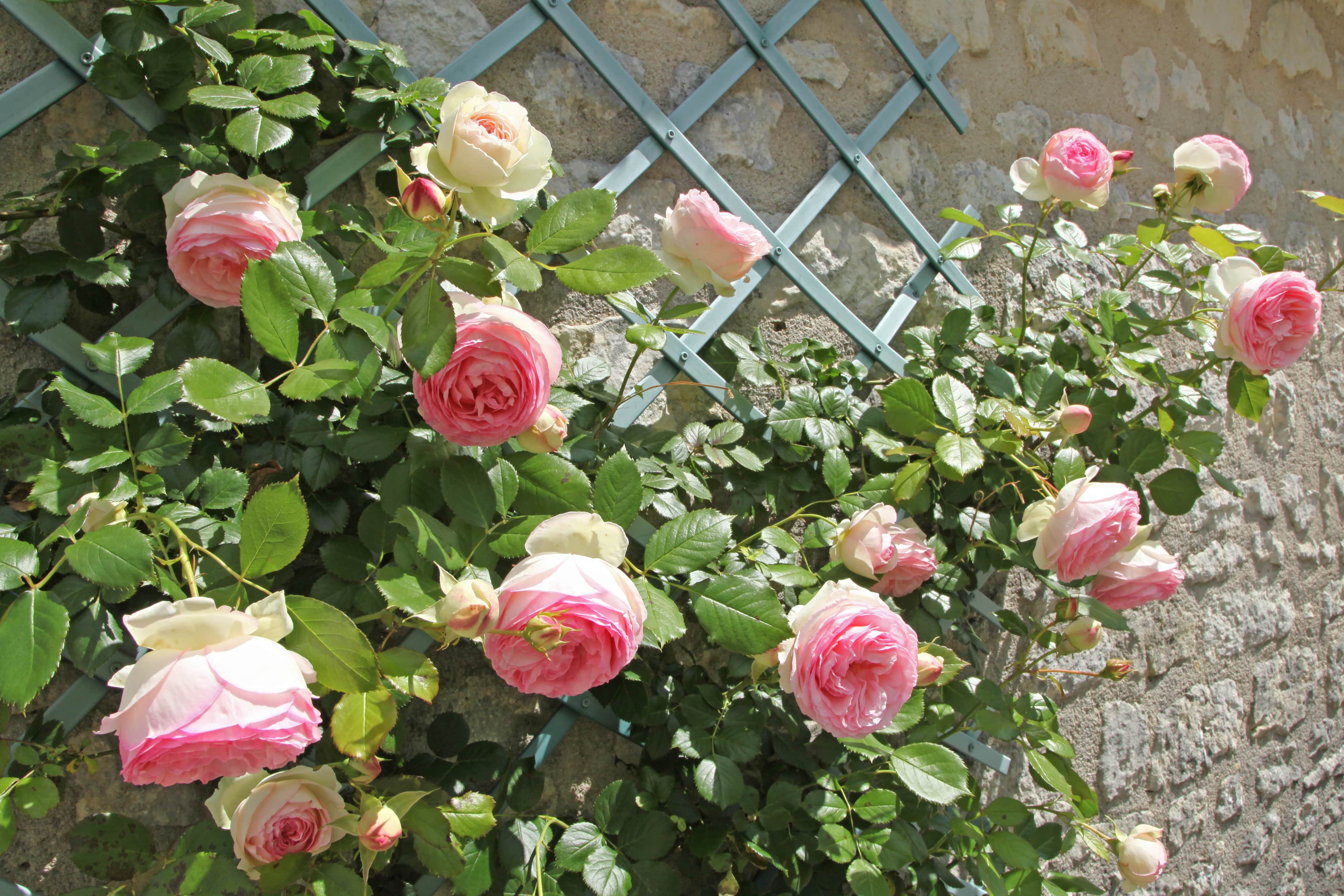
A lattice trellis is the most common type of trellis because its crisscross design gives plants a secure way to latch on and stay in place. Most often made with wood, they can also be made from wire, metal, or plastic.
Use a lattice structure on its own by attaching it to an exterior house wall or securing it firmly in the ground within your garden. Otherwise, you can add a lattice sheet to other structures, like pergolas, arbors, arches, and fences, to turn them into breathtaking trellises.
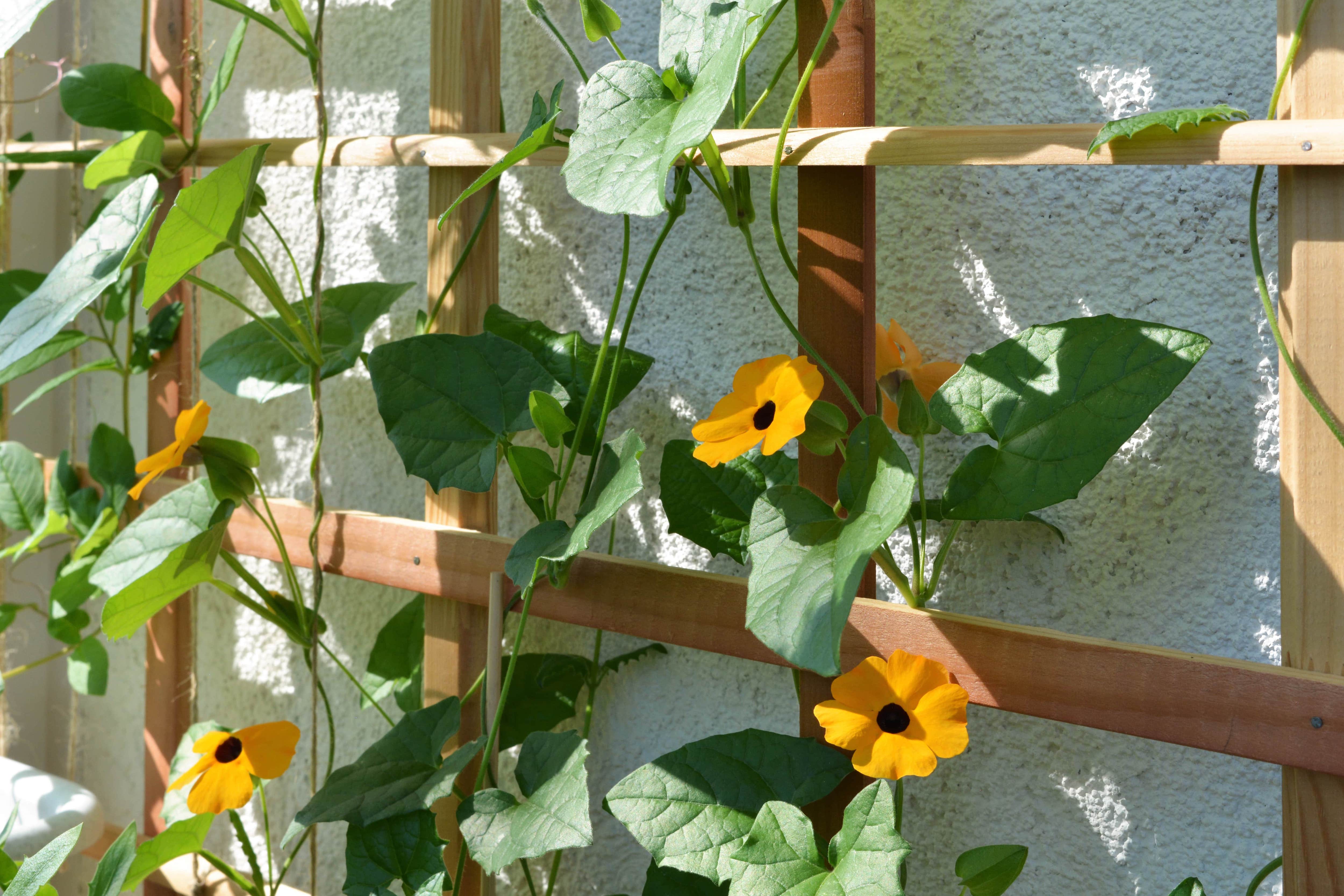
Wood trellises are a beautiful choice for a natural look. There are endless design options for a wood trellis, including lattice, stakes, ladders, and teepees.
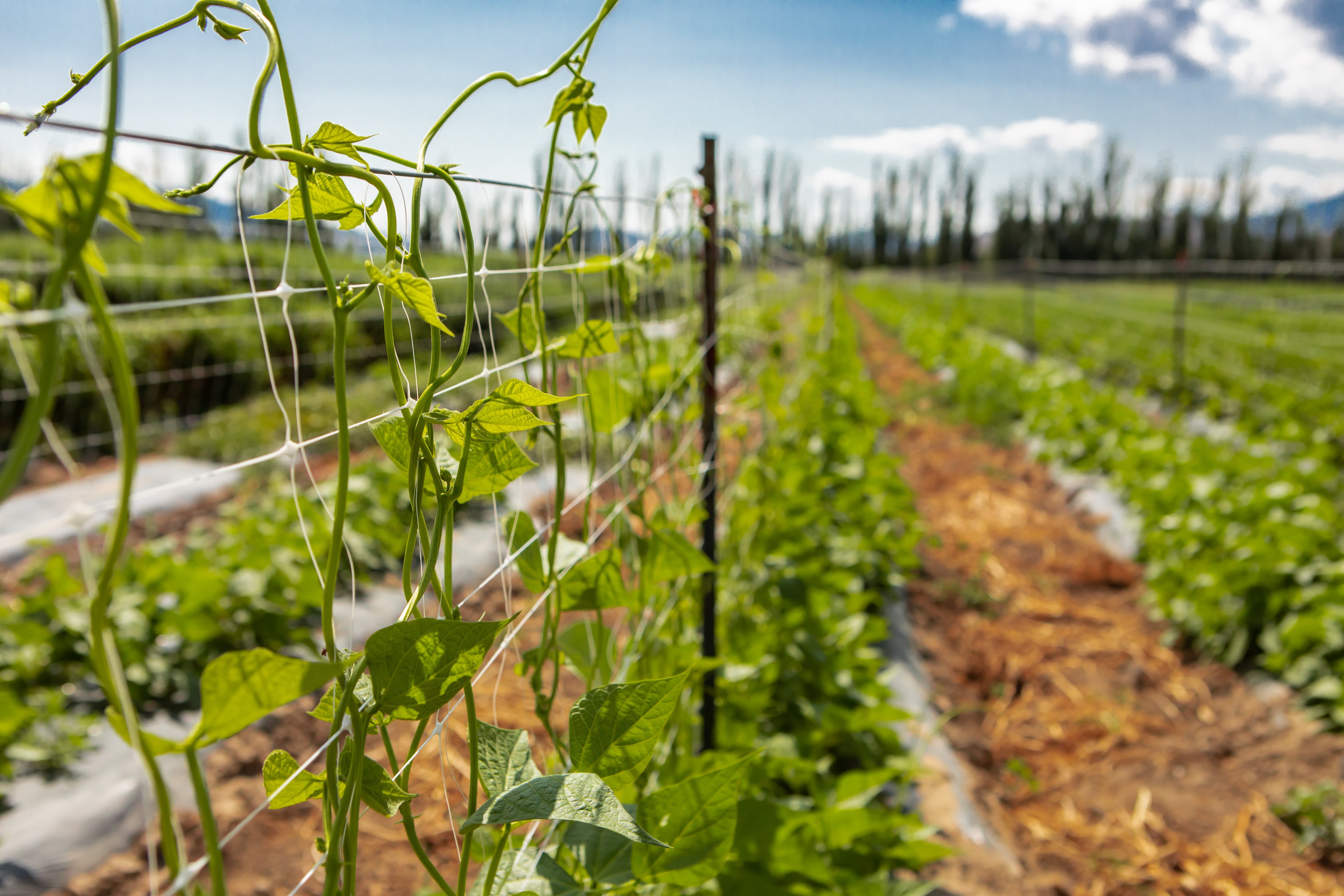
Stake and wire rows are typically used more for function than decor. This trellis type is often seen at wineries and vineyards to grow grapes. You’ve probably also seen them at pick-your-own farms to grow berries. This trellis design works great for planting long rows of fruits or vegetables that you’d like to keep off the ground.

Much like an a-frame house, an a-frame trellis consists of two slanted wood sheets that meet evenly to make a point or ridge at the top. This trellis option is best for growing heavier fruits and vegetables, such as melons, squashes, and gourdes.
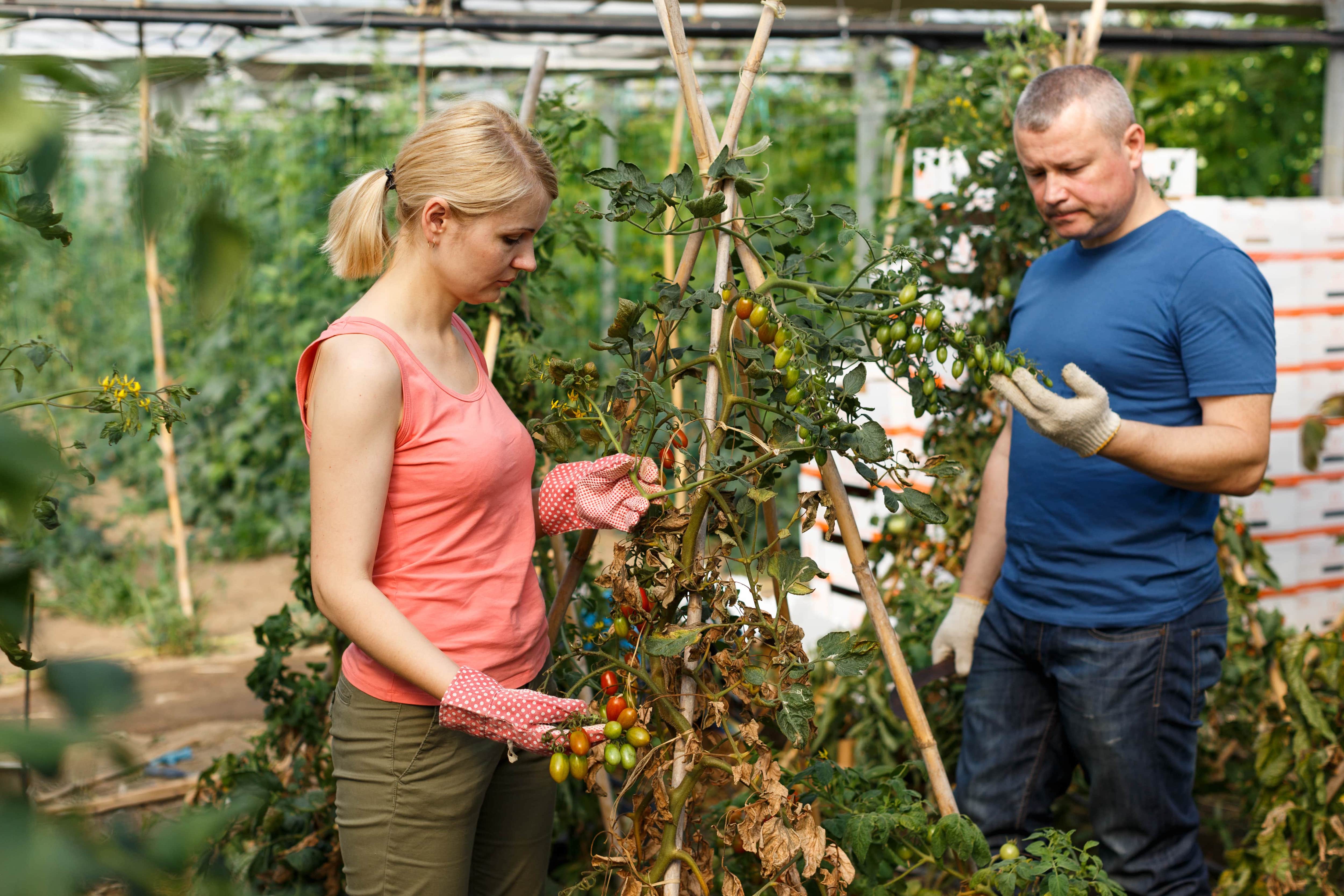
Teepee structures are one of the more common types of garden trellises because they are simple, sturdy, and cheap to make. Fruits and vegetables can easily climb them, and they can be moved around at the beginning or end of a growing season.
Make your own teepee trellis using three or more tall and sturdy wood sticks. The more sticks you use, the sturdier the teepee will be. Just be careful to not use so many that sunlight can’t reach the plants underneath. Stand the sticks up vertically and secure the top end with rope or twine. Extend the bottom points out to create a freestanding teepee. Push the bottom edges into the ground for extra stability.
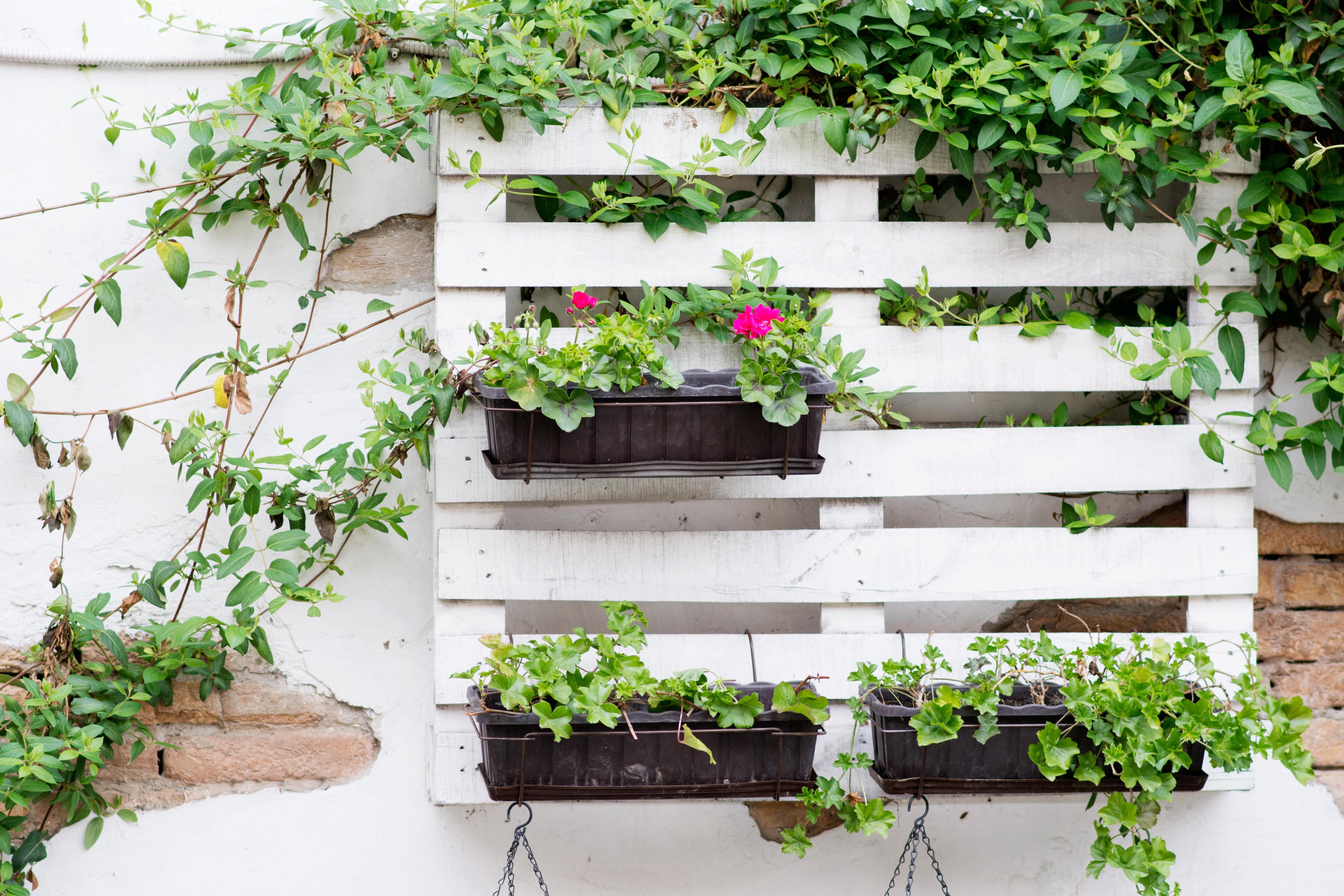
Wood pallet trellises are budget-friendly and easy to use. Mount a pallet to an exterior wall to grow vines and flowers along your house, or lean two pallets together to create an a-frame trellis for your garden.
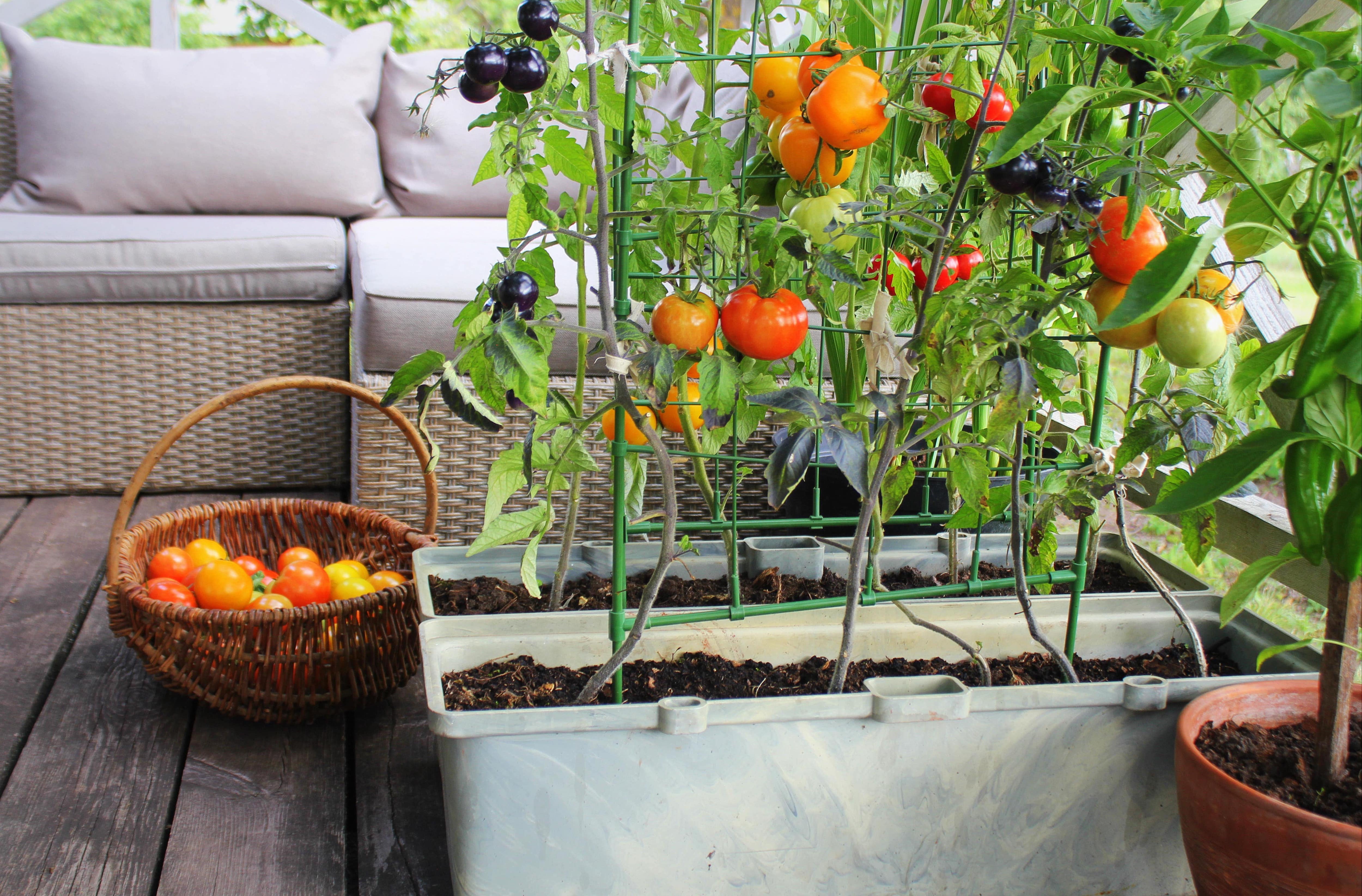
This option is great for those who live in apartments, townhomes, or homes with small yards and would still like to grow their own vegetables. Simply stick the trellis along the inside edge of the pot. If your plant doesn’t climb the trellis on its own, guide it with twine or twist ties. Find small trellises for potted plants at your local hardware store or an online retailer.

Adding a trellis to your window can give your home a whimsical cottage look. There are a couple of ways to go about adding a trellis to your windows. The easiest way is to double your shutters as trellises by using lattice or another wood pattern. There are also metal trellis arches and panels designed specifically to sit in front or over the top of window frames. Find them at your local hardware store or through an online retailer.

Any fence can be a trellis fence, no matter the design or material. Some plants will take to a fence all on their own by attaching to wood fibers or twisting around cast iron beams. Others may need a little help in the form of twine or twist ties to keep them in place.
Not only are fence trellises beautiful, they’re also a great way to add extra privacy and seclusion to your yard if your fence is see-through.
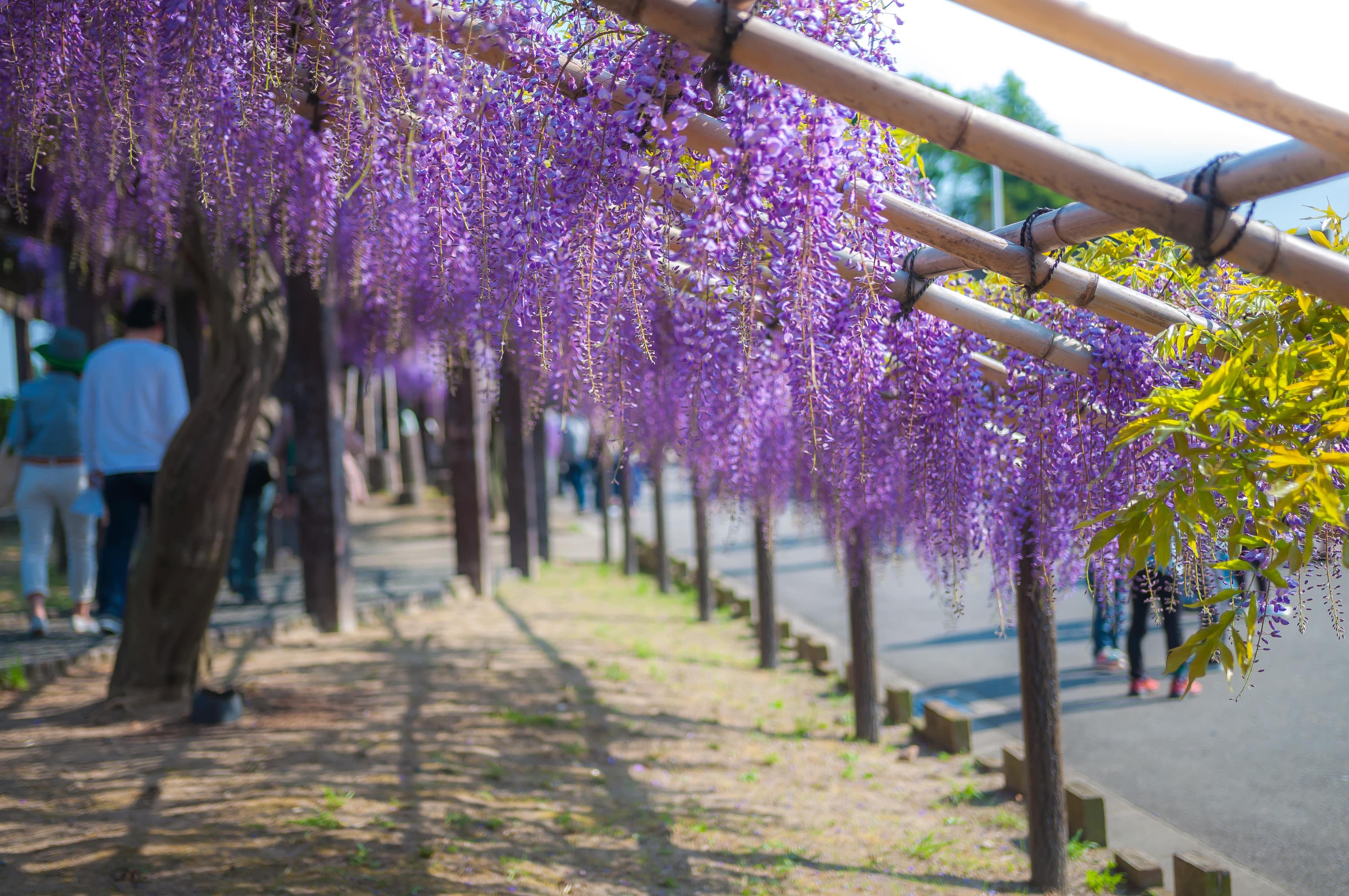
There are several ways to use bamboo stalks to create a truly unique and custom trellis. Options include:
Single bamboo steaks
A-frame bamboo structures with wiring between each one
Teepee trellises
Bamboo lattice
Bamboo grids as pergola roofs
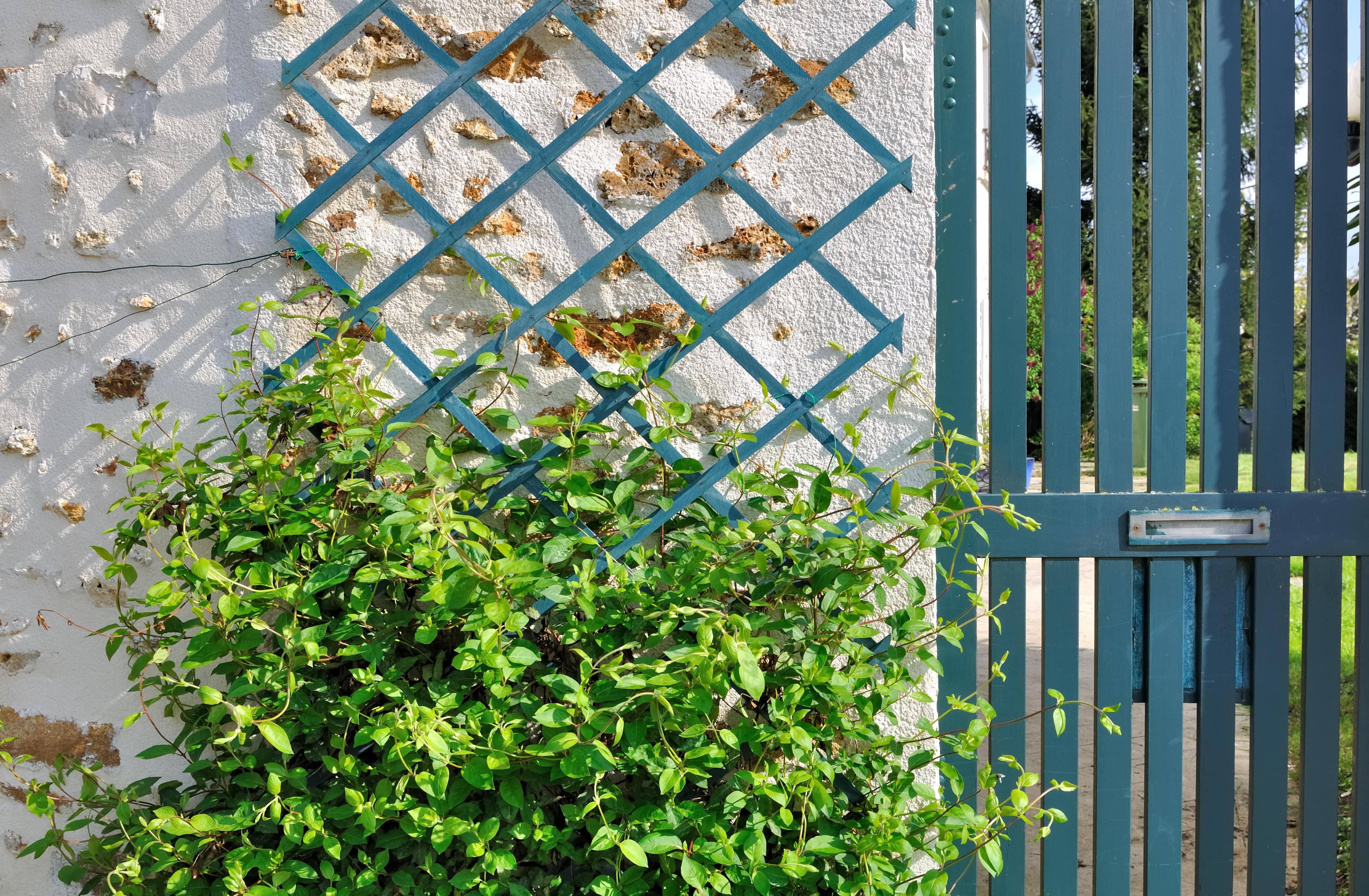
An easy way to add some personality and pizzaz to your trellis is with color. Opt for a vibrant shade (think orange or yellow) for a bright and eclectic look. If you’re growing flowers, consider a dark stain or white paint to make their colors pop.
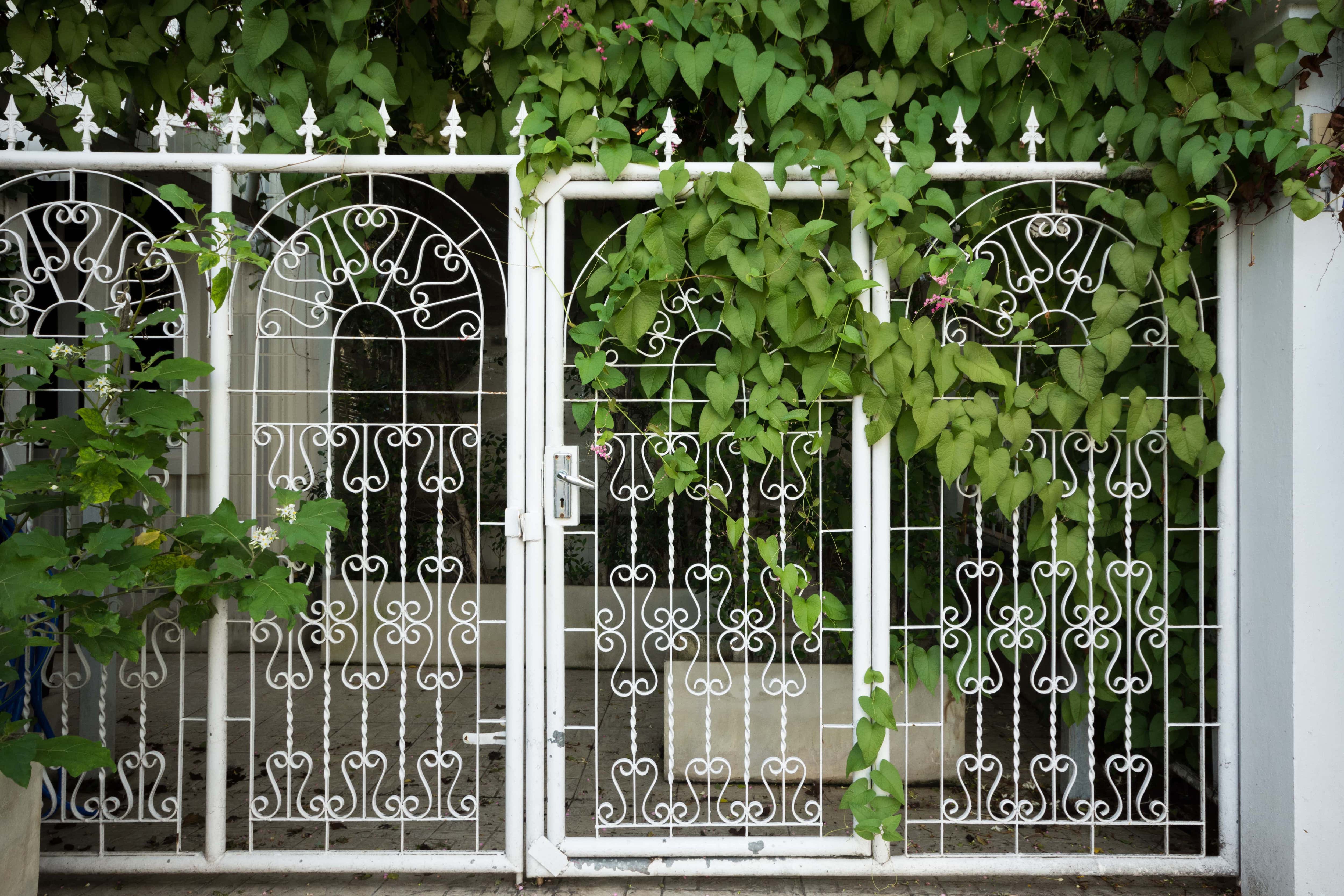
A metal trellis is a strong and sturdy option for growing almost any plant. Use a stand-alone metal trellis that you mount on an exterior wall, or install metal fencing that can double as a trellis. If a sophisticated look is your style, go for a cast-iron metal. Or, opt for steel to incorporate an industrial feel to your yard or garden.
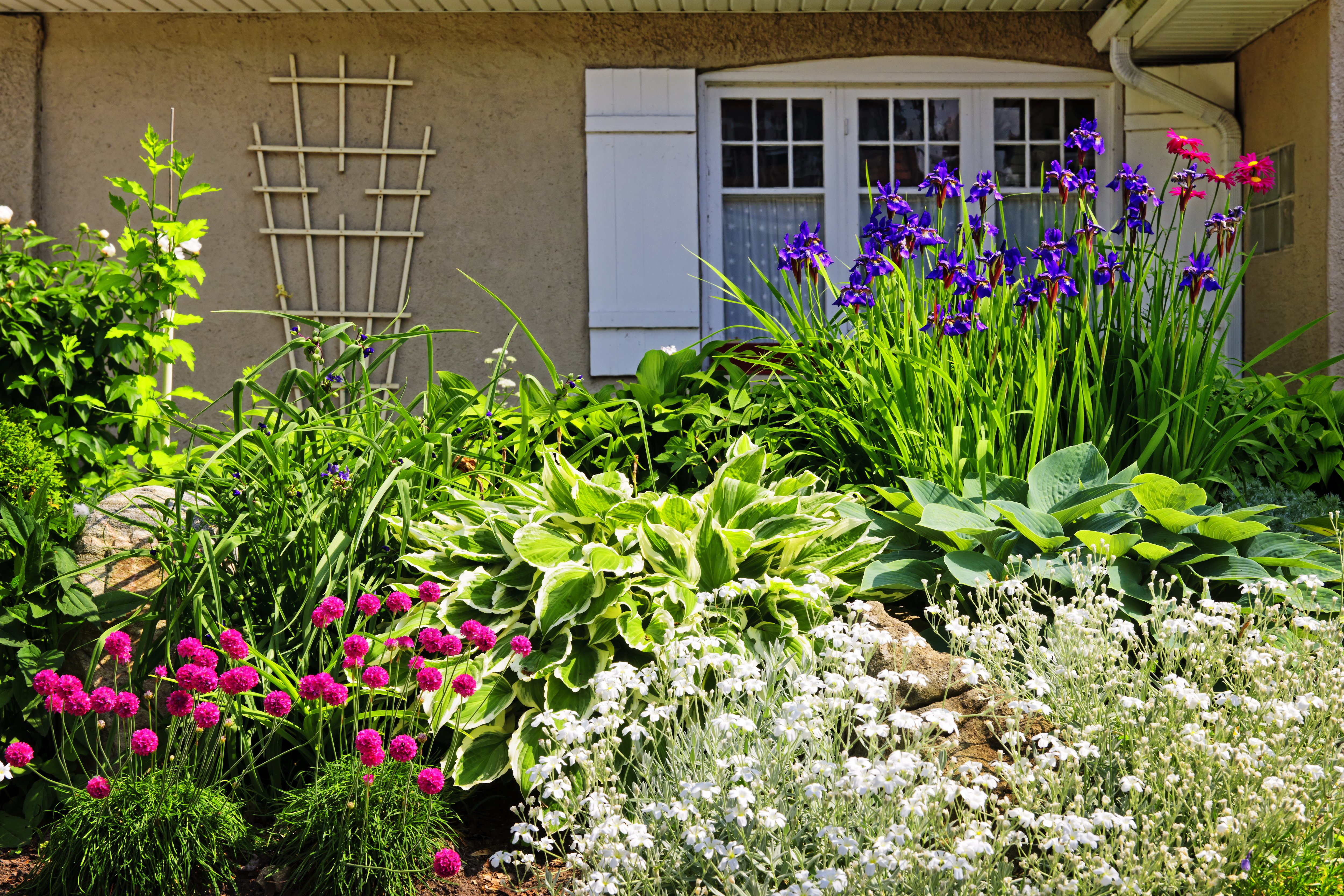
A trellis can be as decorative as it is functional. Get creative with unique lattice shapes and patterns, or step outside of the box and use unorthodox materials to make a trellis structure. For example, create a teepee with old rakes and shovels, or make an easy a-frame out of an old ladder.
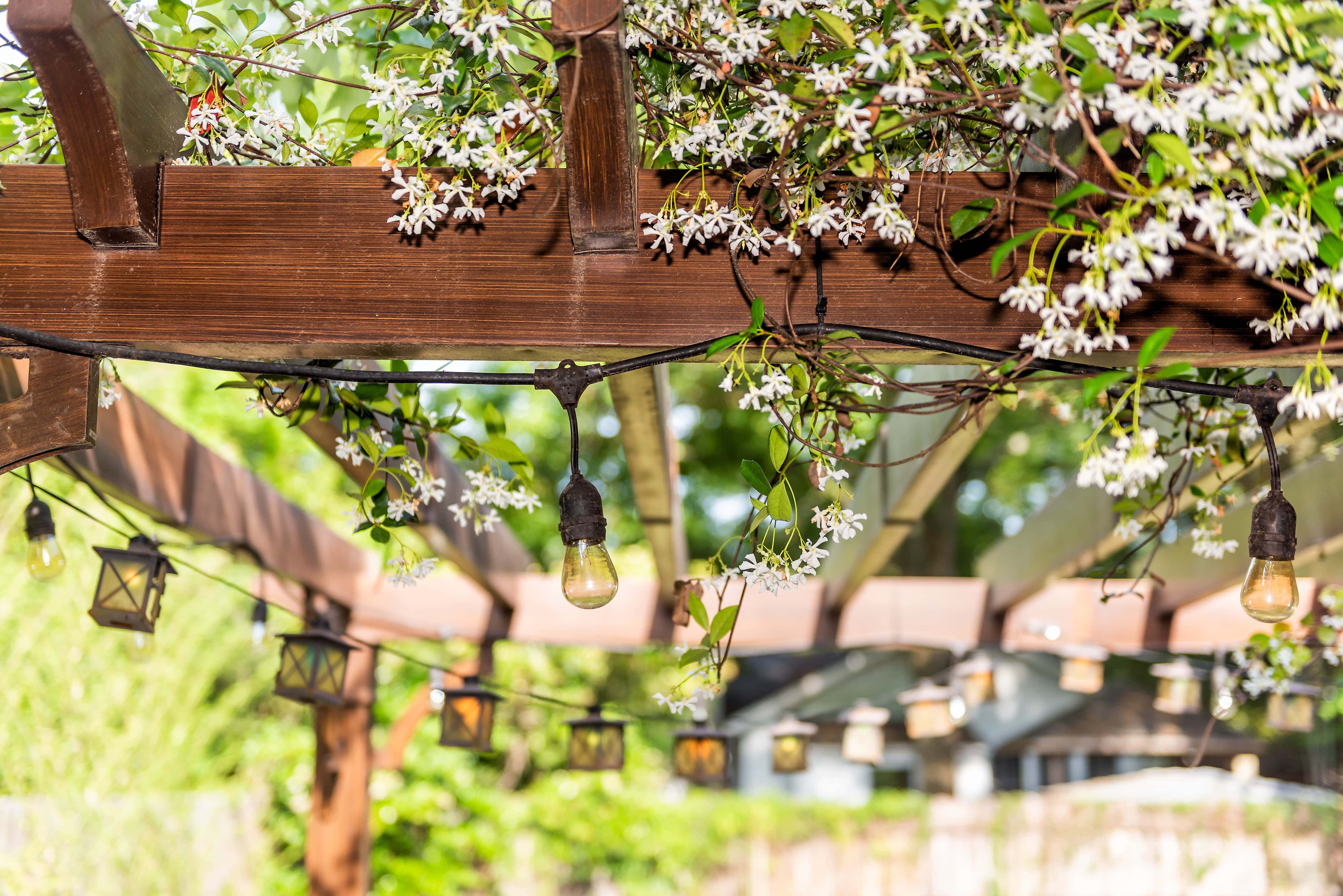
A pergola is a popular backyard structure usually made with four wood beams and several wood slats across the top. Pergolas can double as garden trellises if the plant can climb a wood beam on its own (or you can attach the vine as it grows). You can also add a lattice wall between a pair of beams to give your garden plants extra traction.
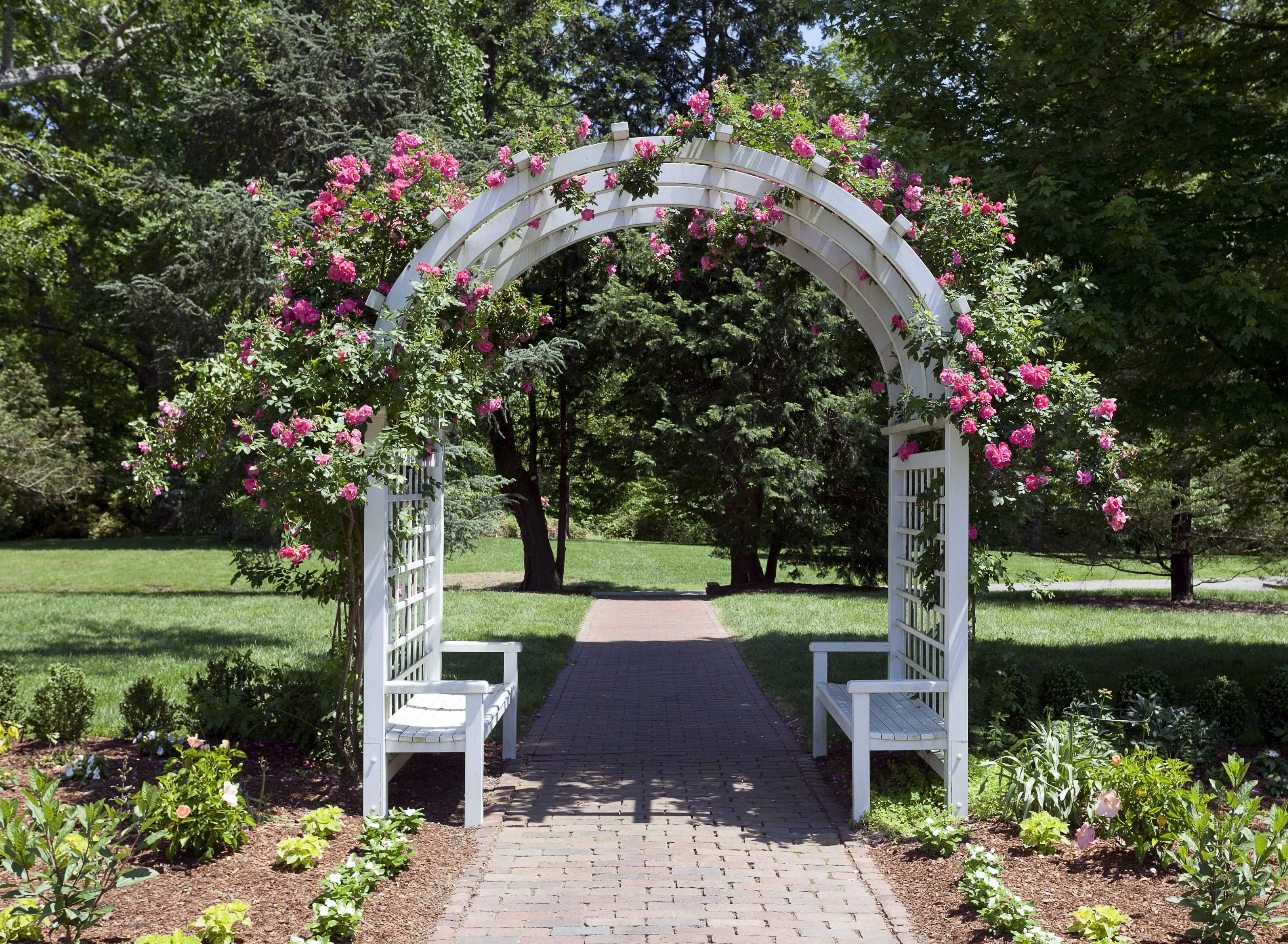
Similar to pergolas, arbors and arches are beautiful backyard garden structures that can double as trellises. Some plants may be able to attach themselves on their own depending on the material of your arbor or arch. However, remember not all plants can “climb” or attach themselves to a trellis—some may require you to use plant twists or twine to secure it as it grows. Consider adding a lattice accent to the sides or top of your arbor or arch to give plants an extra place to grip.

If a magical garden straight out of a storybook is your dream, a tunnel trellis will make it a reality. Simply place a line of two or three tall metal arches over a walkway in your yard or garden to create the tunnel. You can find these arches at your local hardware store or from an online retailer. Plant whimsical flowers and vines on both sides of the tunnel, and let them grow until they cover the sides and top each arch.
There are several benefits to adding a trellis or two to your garden. For starters, growing long vine plants vertically helps clear clutter on the ground and make room for more plants. A trellis also helps save space in small yards.
Additionally, a trellis will keep your plants off the ground and out of the way of chipmunks, squirrels, and other critters. Some options can even act as a type of privacy fence in your yard.
Do you need to add a trellis to your garden? Consider it if you plan on growing any of the following climbing plants:
Beans
Peas
Cucumbers
Squash
Tomatoes
Peppers
Sweet Pea
Petunias
Rose
Ivy
Black Eyed Susan
Wisteria
From average costs to expert advice, get all the answers you need to get your job done.

We break down the cost to remove bamboo, which is slightly higher than other forms of tree removal. It's a difficult DIY task because of bamboo's hardy underground roots.

Growing plants with a hydroponic gardening water system can be a big investment. To know how much it costs to build a hydroponic garden, consider the system, technology, size, and whether you hire a pro. This guide will help calculate costs.

Leveling your yard can help with drainage and prevent damage to your home. Learn the cost to level a yard in Columbus, OH, and what factors can affect the price.
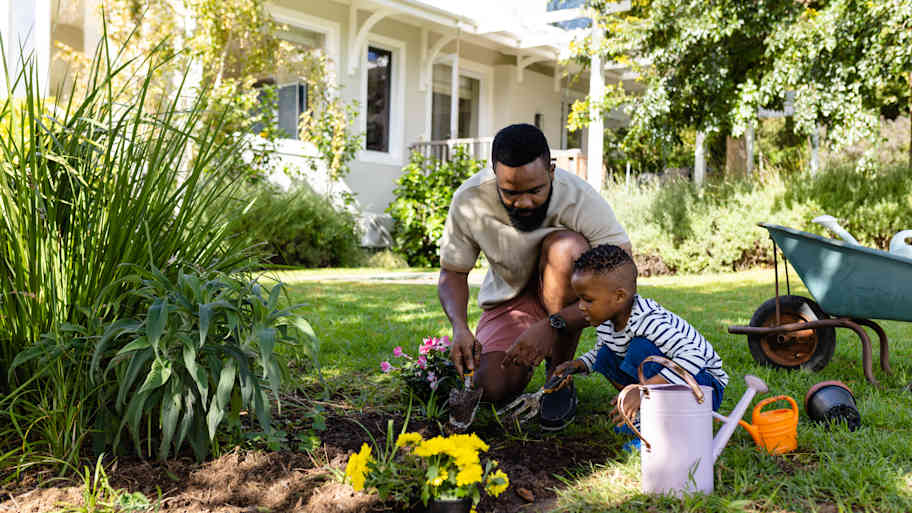
While similar, comparing dirt versus soil comes down to what's inside the material, its usefulness, and how it performs, depending on how you intend to use it.

Hiring a pro isn’t necessary when removing holly bushes. This guide can help you make quick work of the holly bush removal process.

Discover how to remove hedges from your yard safely and effectively when changing the landscaping or eliminating diseased specimens.